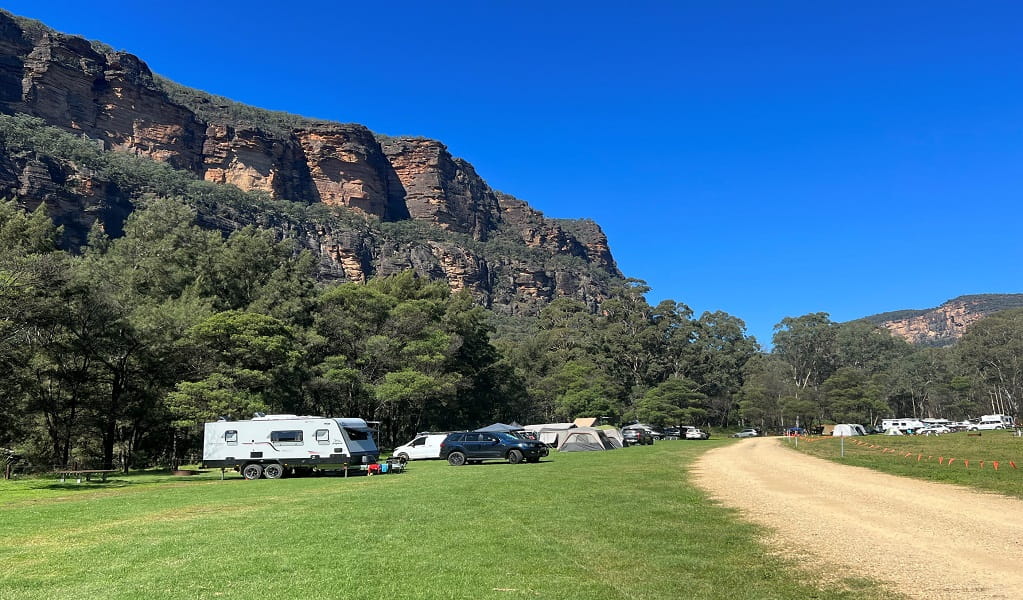Coorongooba campground
Wollemi National Park
Overview
Camp by the river at Coorongooba campground in Wollemi National Park. Fill your days with easy walks, paddling in the shallow river and birdwatching in this World Heritage-listed landscape.
| Camping type | Tent, Camper trailer site, Camping beside my vehicle |
|---|---|
| Where | Capertee River Trail, Glen Davis, NSW, 2846 - in Wollemi National Park |
| Facilities | Picnic tables, barbecue facilities, toilets |
| What to bring | Drinking water, cooking water, firewood |
| Price | There are no camping fees at this campground but a $6 booking fee applies. |
| Bookings | Bookings for up to 2 sites and 12 people can be made online. |
| Group bookings | This campground is not suitable for group bookings. |
| Please note |
|
Secluded Coorongooba campground is the ideal place to pitch a tent, relax and recharge in the dramatic World Heritage surrounds of Wollemi National Park.
Set on the crystal clear Capertee river, you’ll have plenty of opportunities to splash about in river pools, enjoy invigorating walks along the Capertee river trail, or just soak up the natural ambience with a good book. The Capertee is usually shallow but if there’s been rain, why not try your hand at liloing?
The Capertee river trail is also a great place for birdwatching. It’s close to a breeding site for the endangered regent honeyeater, so if you’re there during spring, keep your eyes open for fledglings learning to fly.
Watching the afternoon light change with a cup of steaming bush tea brewed on the wood barbie rounds off this wonderfully simple camping experience.
Map
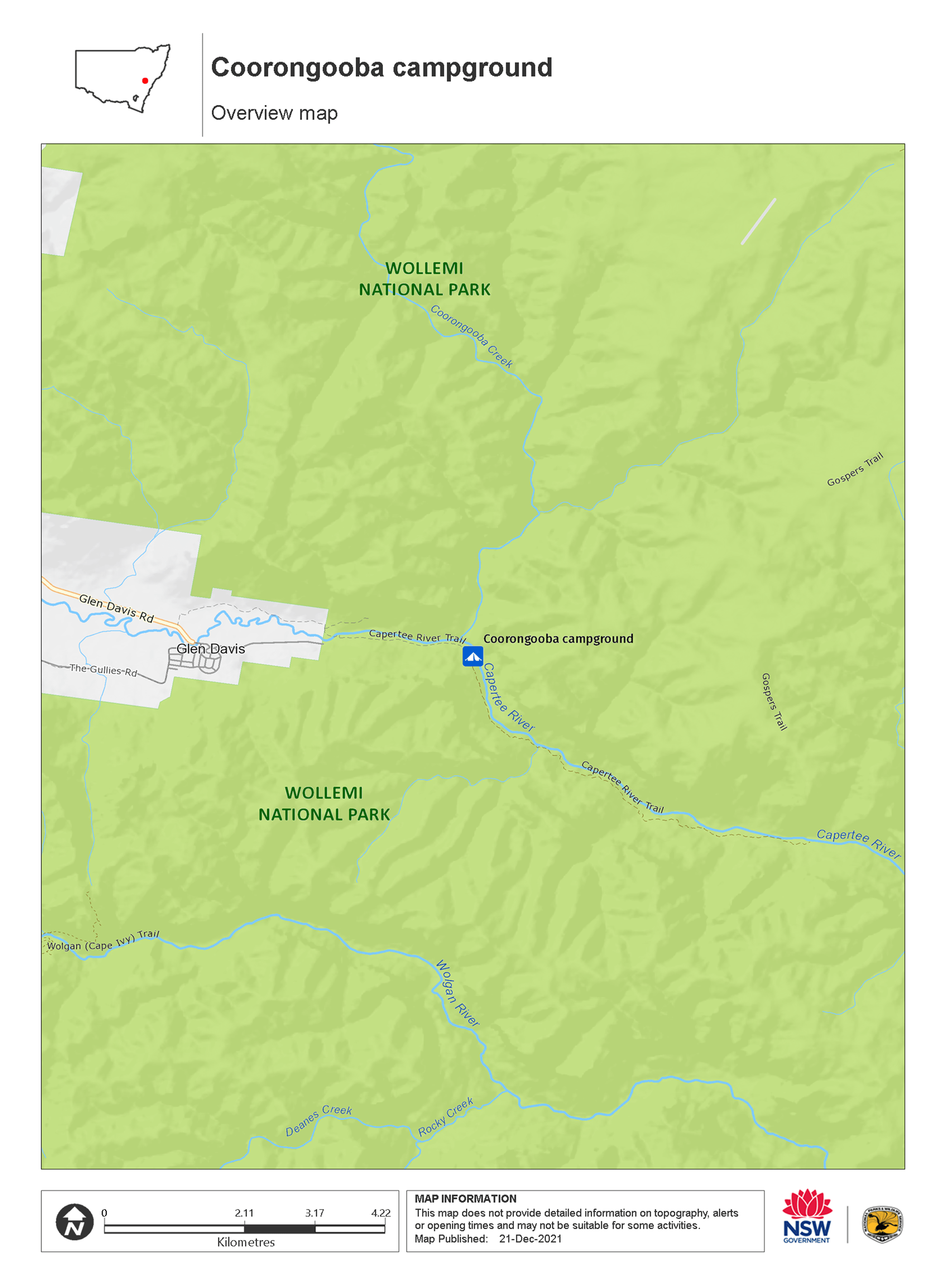
Map legend

Local alerts
For the latest updates on fires, closures and other alerts in this area, see https://www.nationalparks.nsw.gov.au/camping-and-accommodation/campgrounds/coorongooba-campground/local-alerts
Operated by
- Mudgee office
- Monday to Friday, 9am to 4:30pm.
- 02 6370 9000
- npws.mudgee@environment.nsw.gov.au
- 27 Inglis Street, Mudgee NSW 2850
Park info
- in Wollemi National Park in the Sydney and surrounds, North Coast and Country NSW regions
Wollemi National Park is always open but may have to close at times due to poor weather or fire danger.
Visitor info
All the practical information you need to know about Coorongooba campground.
Getting there and parking
Coorongooba campground is in the western section of Wollemi National Park. To get there:
- Turn off the Castlereagh Highway at Capertee and travel east for 35km
- Turn left 1km before Glen Davis village at Goora Street
- Turn right at Nioka Street and follow the signs to the park
- Depending on the water level, you may need a 4WD to cross the Capertee river or its a short walk from the crossing to the campground
Road access
- Check the weather before you set out as the road to Coorongooba campground can become boggy when it rains.
- This campground is accessed via a causeway which may be unpassable after heavy rain.
- Unsealed roads
Vehicle access
- Most roads suitable for 2WD vehicles
Weather restrictions
- 4WD required in wet weather
Parking
Parking is available at Coorongooba campground.
Best times to visit
There are lots of great things waiting for you in Wollemi National Park. Here are some of the highlights.
Autumn
With its softer light, autumn is the perfect time of year to head out to photograph or paint Wollemi's extraordinary landscapes.
Spring
With the temperature warming up, dig out the canoe and head to picturesque Ganguddy (Dunns swamp) for a cruise along the waterways.
Summer
Escape the heat and join an illuminating tour of the Glow Worm tunnel.
Facilities
- Water is not available at this campground. If you take water from the creeks in the park, remember to treat or boil it.
- Please take all garbage with you when you leave
Toilets
- Non-flush toilets
Picnic tables
There are picnic tables throughout the campground, including 2 picnic tables that are accessible.
Barbecue facilities
- Wood barbecues (bring your own firewood)
Step-free access
The campground is flat and step-free, with a hard-packed ground path that runs from the carpark past the campsites and picnic tables.
- Step-free outdoor pathways
Maps and downloads
Accessibility
Disability access level - easy
Assistance may be required to access the river as the banks are uneven and sloped. No other tracks are accessible.
Prohibited
Drones
Flying a drone for recreational purposes is prohibited in this area. Drones may affect public enjoyment, safety and privacy, interfere with park operations, or pose a threat to wildlife. See the Drones in Parks policy.
This area may be a declared Drone Exclusion Zone, or may be subject to Civil Aviation Safety Authority (CASA) rules for flying near airports, aerodromes and helicopter landing sites. See CASA's Drone Flyer Rules.
Commercial filming and photography
Commercial filming or photography is prohibited without prior consent. You must apply for permission and contact the local office.
Gathering firewood
Firewood is not supplied and may not be collected in the park.
Pets
Pets and domestic animals (other than certified assistance animals) are not permitted. Find out which regional parks allow dog walking and see the pets in parks policy for more information.
Smoking
NSW national parks are no smoking areas.
Learn more
Coorongooba campground is in Wollemi National Park. Here are just some of the reasons why this park is special:
Ancient connections
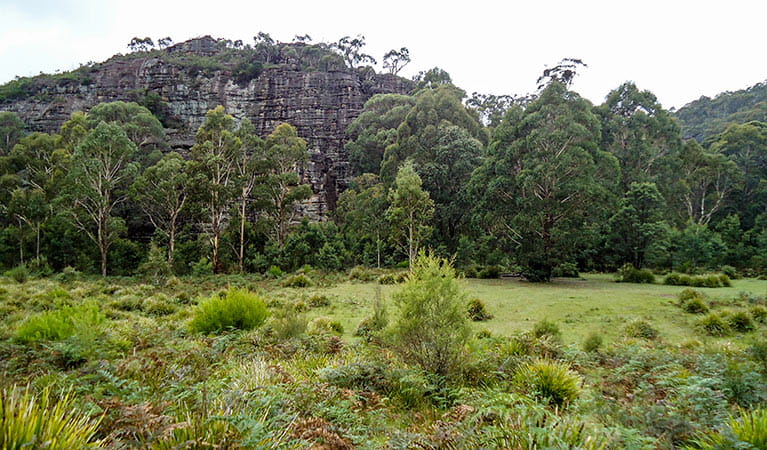
The area that is now Wollemi National Park has held significance to Aboriginal people for at least 12,000 years. Evidence of this connection can be seen throughout the park, including ceremonial grounds, stone arrangements, grinding grooves, scarred trees and rock engravings. There are around 120 known Aboriginal sites in the park and probably many more yet to be discovered. The Wiradjuri, Dharug, Wanaruah and Darkinjung people have a strong and ongoing cultural association with their traditional lands and waters.
- Guided kayak tours of Ganguddy-Dunns Swamp Experience the natural beauty of escarpments, gorges and wildlife on a guided paddling tour of Gunguddy-Dunns Swamp with Southern Cross Kayaking.
- Pagoda Lookout walking track Pagoda Lookout walking track is a short but steep walk near Rylstone in Wollemi National Park. Enjoy incredible views over ancient pagoda rock formations and the Cudgegong River.
Geological marvels
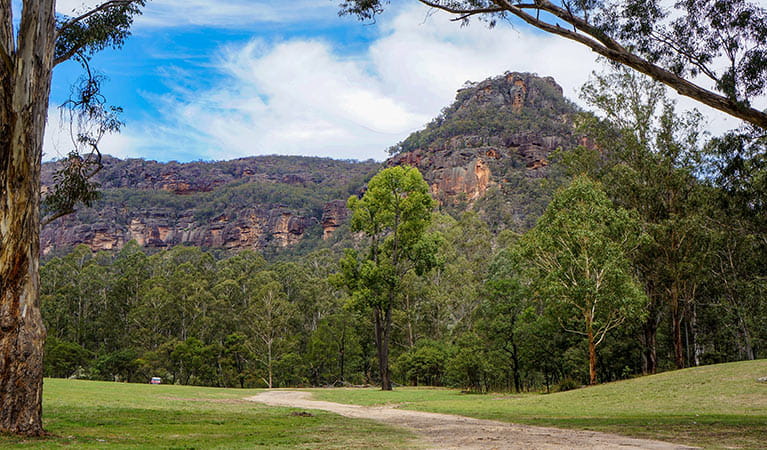
Wollemi's landscape has been sculpted over millennia into a magnificent network of soaring sandstone escarpments, plunging gorges and canyons, winding river valleys and awe-inspiring geological and geomorphological features such as pagoda rock formations, basalt-capped mountains and diatremes. The spectacular Colo gorge and its tributaries form the most extensive sandstone canyon system in eastern Australia. Grab your camera and discover for yourself the breathtaking vistas and natural marvels that make this a World Heritage treasure.
- Explore Wollemi's wonders guided tour Experience the highlights of Wollemi National Park on this guided tour with Hikeandseek NSW. Traverse canyons, tunnels and valleys while learning about the area’s history.
- Guided kayak tours of Ganguddy-Dunns Swamp Experience the natural beauty of escarpments, gorges and wildlife on a guided paddling tour of Gunguddy-Dunns Swamp with Southern Cross Kayaking.
- Pagoda Lookout walking track Pagoda Lookout walking track is a short but steep walk near Rylstone in Wollemi National Park. Enjoy incredible views over ancient pagoda rock formations and the Cudgegong River.
- Wollemi camping and canyoning expeditions Join Roam Adventures and Training on a camping and canyoning adventure in the stunning Wollemi National Park.
Nature's haven
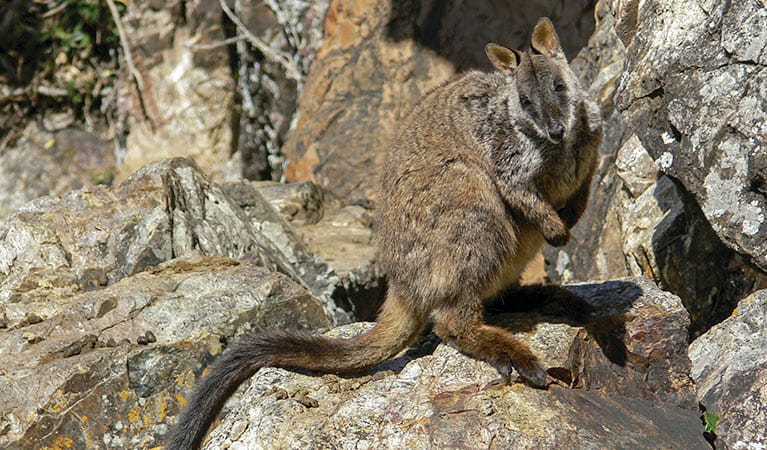
It's little surprise that Wollemi's spectacular landscape shelters a rich diversity of plants and animals. The rare Wollemi pine - a 'living fossil' whose closest relatives thrived some 90 million years ago was rediscovered here in 1994, and the park protects an incredible array of botanical species and communities, from open eucalypt forest and woodlands including Hawkesbury and grey box, to rainforests and perched swamps. This variety makes it an appealing habitat for eastern grey kangaroos, red-necked wallabies and the elusive brush-tailed rock wallaby, as well as the beautifully marked broad-headed snake, regent honeyeater and glossy black cockatoo. Around 55 species of butterfly have also been recorded.
- Wollemi guided Glow Worm Tunnel walk Join Wolgan Valley Eco Tours on the popular Glow Worm Tunnel walking track in Wollemi National Park and see the magical natural light show created by thousands of glow worms.
Outdoor adventure
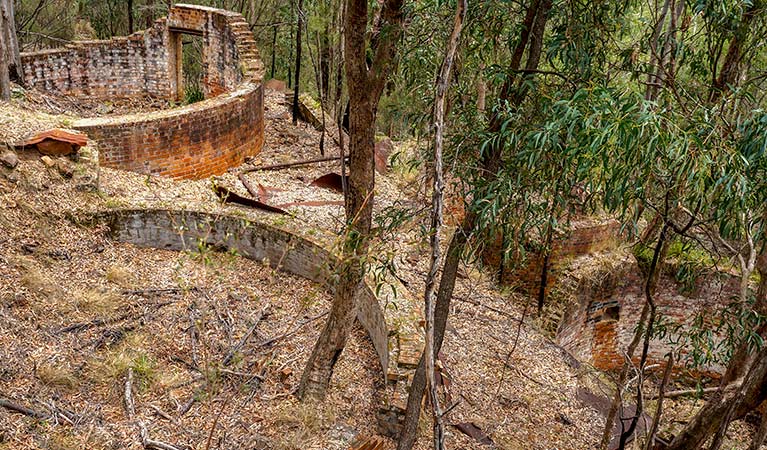
Pitch a tent at one of Wollemi's great campgrounds, like the secluded Colo Meroo backpack campground, the car-accessible Coorongooba campground or the dramatically-situated, car-accessible Newnes campground. With your base set up, you're free to get out and enjoy the park's fantastic outdoor attractions, be they more relaxed pursuits such as picnicking, canoeing and swimming or something more adventurous like rock climbing, horseriding and hiking.
Plants and animals protected in this park
Animals
-

Superb lyrebird (Menura novaehollandiae)
With a complex mimicking call and an elaborate courtship dance to match, the superb lyrebird is one of the most spectacular Australian animals. A bird watching must-see, the superb lyrebird can be found in rainforests and wet woodlands across eastern NSW and Victoria.
-

Bare-nosed wombat (Vombatus ursinus)
A large, squat marsupial, the Australian bare-nosed wombat is a burrowing mammal found in coastal forests and mountain ranges across NSW and Victoria. The only other remaining species of wombat in NSW, the endangered southern hairy-nosed wombat, was considered extinct until relatively recently.
-

Southern boobook (Ninox novaeseelandiae)
The southern boobook, also known as the mopoke, is the smallest and most common native owl in Australia. With a musical 'boo-book' call that echoes through forests and woodlands, the southern boobook is a great one to look out for while bird watching.
-
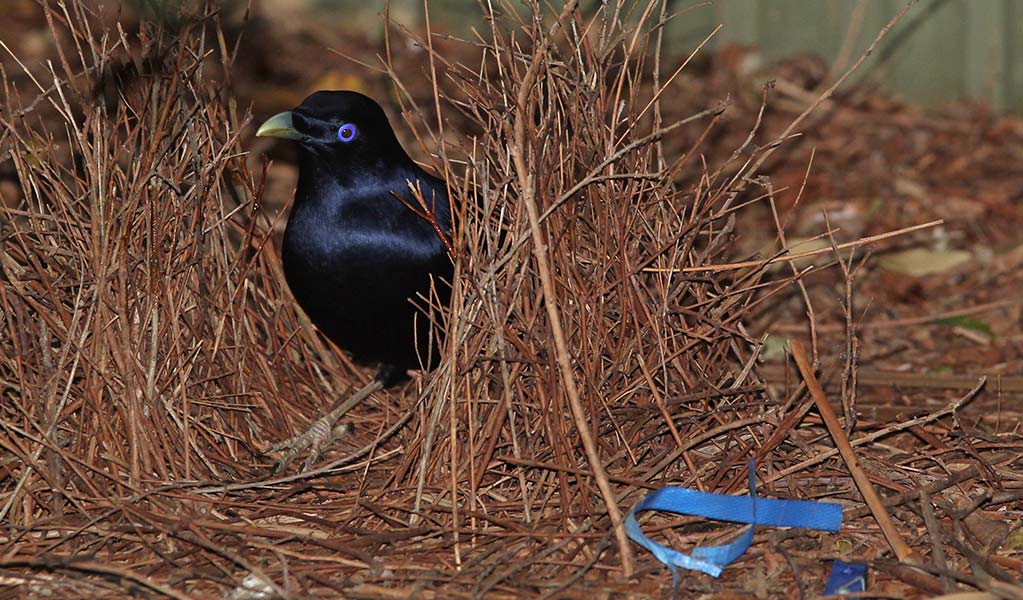
Satin bowerbird (Ptilonorhynchus violaceus)
With vibrant blue-violet eyes and curious antics, the satin bowerbird is a favourite for bird watching and easy to spot as it forages for food in open forest. Relatively common across eastern Australia, in NSW they’re found in coastal rainforests and adjacent woodlands and mountain ranges.
-
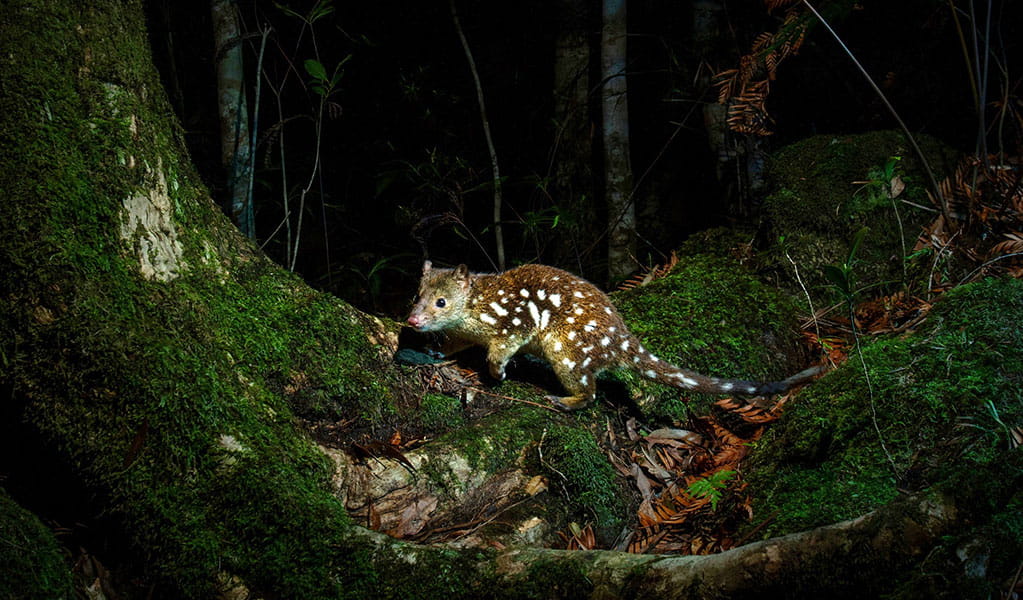
Spotted-tailed quoll (Dasyurus maculatus)
The spotted-tailed quoll is the largest remaining carnivorous marsupial on the Australian mainland. It’s protected as a vulnerable species in NSW.
Plants
-
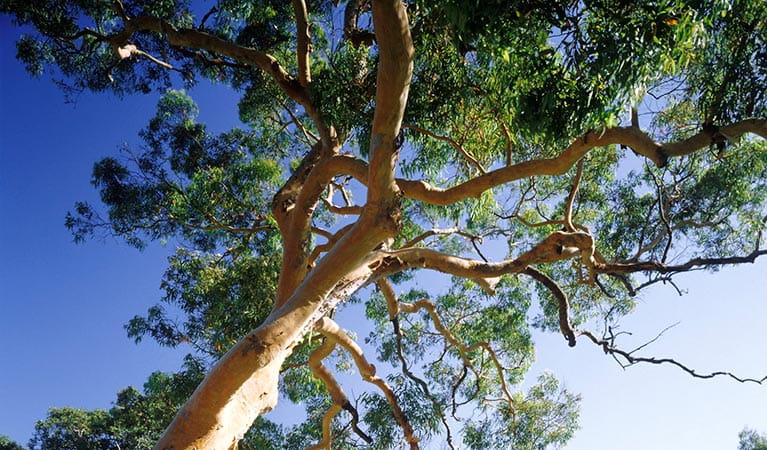
Smooth-barked apple (Angophora costata)
Smooth-barked apple gums, also known as Sydney red gum or rusty gum trees, are Australian native plants found along the NSW coast, and in the Sydney basin and parts of Queensland. Growing to heights of 15-30m, the russet-coloured angophoras shed their bark in spring to reveal spectacular new salmon-coloured bark.
-
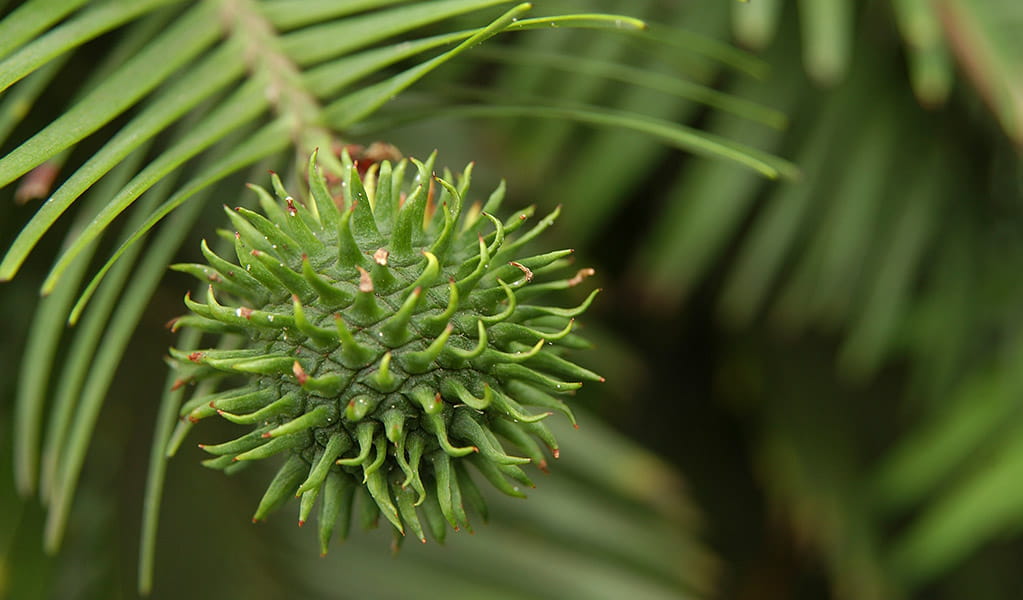
Wollemi pine (Wollemia nobilis)
The Wollemi pine is one of the world’s oldest and rarest trees. Only 46 adult trees and 43 juveniles remain in the wild. Belonging to a 200 million year-old plant family, this critically endangered Australian species is considered a global treasure.

